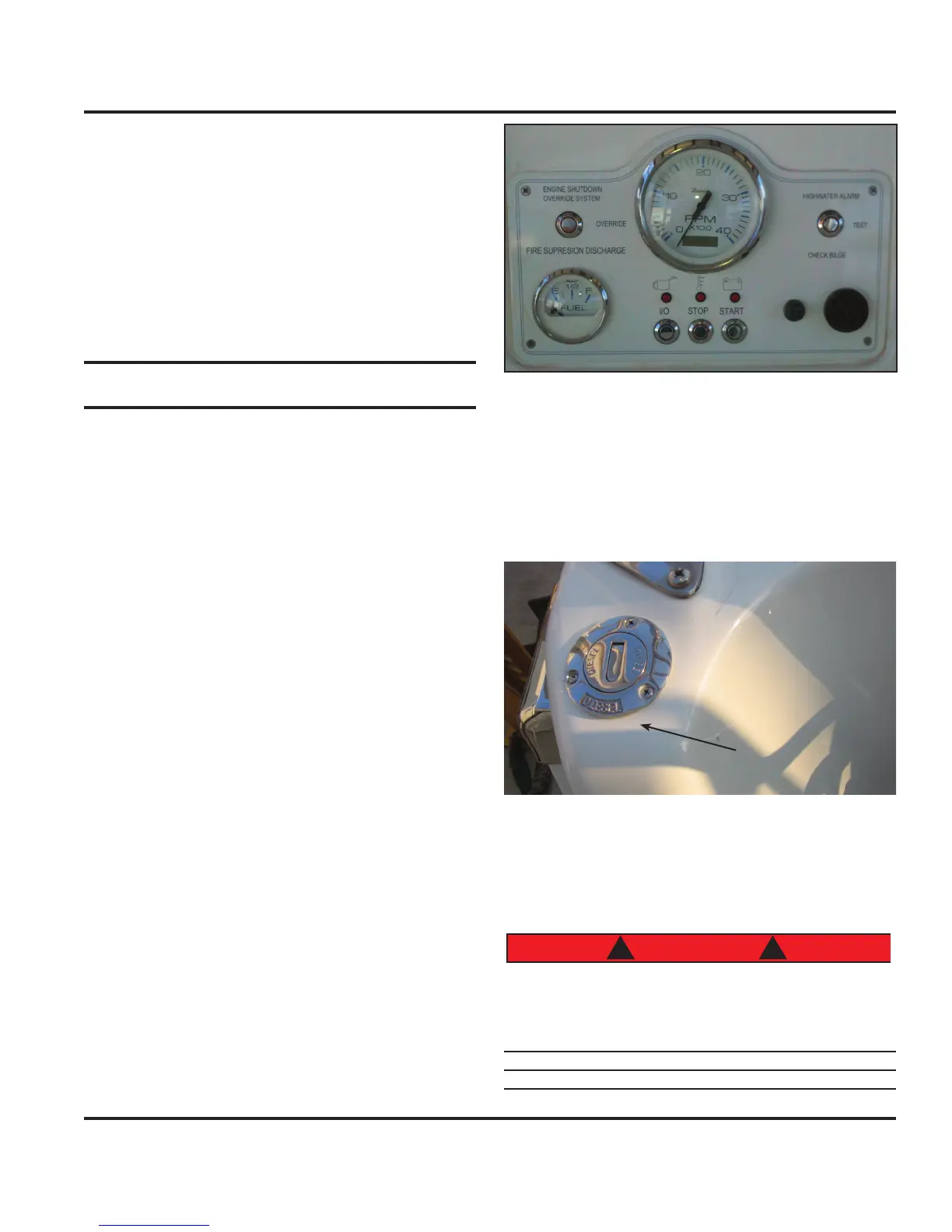Fuel Systems
The fuel systems aboard your Hunter boat consists of the
following components or sub-systems.
Fuel Tank
Fuel Fill
Fuel Vent
Fuel
Lines
Fuel Filters
LPG (Liquefied Petroleum Gas) System
5.1 Fuel Tanks
Your boat is equipped with a fuel tank. In the aft state-
room under the bunk.
The tank is filled through a fuel fill.
If your boat has a metal or aluminum tank installed, then
the fuel tank should be inspected for signs of leaks, cor
-
rosion, and/or pitting at least once a year. Corrosion
normally appears as a white, chalky, or flaky substance
on the surface of the tank. Sometimes, it also appears
as pitting or small pockets of missing aluminum. Another
indication of corrosion is bubbles on the paint that coats
the tank. If any of these conditions are present, have an
authorized service technician inspect the tank immedi
-
ately. If a leak is found, turn off battery switches and dis-
connect shore power (See Connecting & Disconnecting
Shore Power, AC Electrical System), which explains
the proper way to disconnect and disable any possible
source of ignition). Contact your dealer or Customer
Service immediately.
5.1.1 Fuel Tank Capacity Monitoring
The fuel tank is equipped with a fuel level sending unit, which
provides an electrical signal to the display located at the helm.
•
•
•
•
•
•
•
5.1.1 Fuel Tank Grounding System
The fuel tank and fuel fill on your boat are electrically
grounded to the engine negative. (see the DC Electrical
chapter). This grounding system is designed to prevent
the discharge of static electricity when fueling your boat.
An authorized service technician should inspect this sys
-
tem at least once each year.
5.1.2 Fuel Gauge
The fuel gauge as shown in Fig. 5.1 is located at the
helm, and is the indicator of the fuel level in your tank.
Visually inspect the reading against what is show
-
ing in the tank to see that the gauge is operational.
Never enter the engine room without proper ventila-
tion first. A spark caused by power tools or lighting
equipment could result in fire or explosion which
could cause personal injury or death.
Fig. 5.1
Fig. 5.2
Fuel Fill
Hunter e36 • Fuel Systems
5.3

